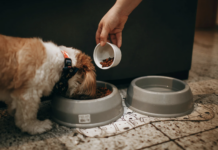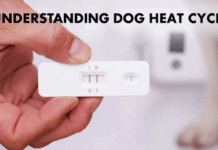Last Updated on July 26, 2024 by Dogs Vets
Daily Cleaning Routine for Pets
Taking care of your pet’s hygiene is not just about keeping them clean; it’s about ensuring their health and well-being. A daily cleaning routine can prevent issues like infections, odors, and discomfort for your furry friend.
In this comprehensive guide, we’ll walk you through the essential steps and tips to maintain a clean and happy pet.
Maintaining a clean environment for your pet is crucial for their health and happiness. Whether you have a dog, cat, or other furry companions, a daily cleaning routine can make a significant difference.
Why Daily Cleaning Matters
Regular cleaning helps in preventing infections and illnesses in pets. It also reduces shedding and keeps your home clean and odor-free.
Essential Supplies for Pet Cleaning
Before you start, gather the necessary supplies: pet-safe shampoo, brushes, towels, ear cleaning solution, toothbrush and toothpaste for pets, nail clippers, and a grooming table or area.

Step-by-Step Daily Cleaning Routine
1. Brushing
Regular brushing removes dirt, debris, and loose hair, preventing matting and reducing shedding. Brush your pet’s coat gently in the direction of hair growth.
2. Ear Cleaning
Clean your pet’s ears using a veterinarian-approved ear cleaning solution and cotton balls. Gently wipe the outer ear canal; avoid inserting anything into the ear canal.
3. Teeth Cleaning
Brush your pet’s teeth daily using a toothbrush and toothpaste designed for pets. Dental hygiene is crucial for preventing dental diseases and bad breath.
4. Bathing
Bathe your pet as needed using a mild, pet-safe shampoo. Use lukewarm water and thoroughly rinse to remove all shampoo residue.
5. Nail Trimming
Regularly trim your pet’s nails to prevent overgrowth, which can lead to discomfort and difficulty walking. Use pet-specific nail clippers and avoid cutting into the quick (the pink part of the nail).
6. Cleaning Bedding and Toys
Wash your pet’s bedding, blankets, and toys regularly to remove dirt, hair, and bacteria. Use a pet-safe detergent and ensure thorough drying.
Tips for Effective Pet Cleaning
- Tip 1: Introduce grooming and cleaning routines gradually, especially if your pet is not accustomed to it.
- Tip 2: Reward your pet with treats and praise to make cleaning sessions positive experiences.
- Tip 3: Monitor your pet’s skin and coat for any signs of irritation, allergies, or parasites during cleaning.
Conclusion
A daily cleaning routine is an essential part of pet care, promoting their health and enhancing their quality of life. By following these steps and tips, you can ensure your pet stays clean, comfortable, and happy.
FAQs About Daily Pet Cleaning
How often should I bathe my pet?
The frequency of baths depends on your pet’s breed, activity level, and skin condition. Generally, bathing once a month is sufficient for most pets.
Can I use human shampoo on my pet?
No, human shampoo can be too harsh for pet skin and may cause dryness or irritation. Use a shampoo specifically formulated for pets.
What should I do if my pet resists teeth brushing?
Start slowly by letting your pet taste the toothpaste and gradually introduce the toothbrush. Use positive reinforcement and be patient.
How often should I clean my pet’s ears?
Clean your pet’s ears once a week or as recommended by your veterinarian, especially if your pet is prone to ear infections.
Is it necessary to trim my pet’s nails regularly?
Yes, trimming nails prevents discomfort and allows your pet to walk properly. Check nails monthly and trim as needed.
Should I groom my pet daily?
Daily grooming, including brushing and checking for skin issues, helps maintain your pet’s coat and overall health.
Can I clean my pet’s toys in the dishwasher?
Yes, if the toys are dishwasher-safe and made of durable materials. Use a pet-safe detergent and ensure toys are thoroughly dried.

















